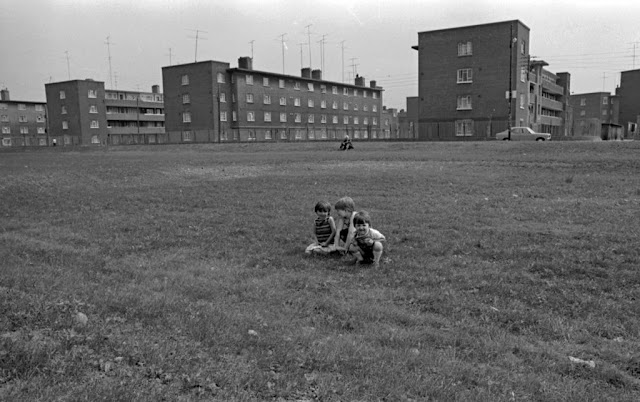I remember Fatima Mansions flats had a live-in caretaker when I was there as a kid. They removed the caretakers as part of a general attack on social housing. At the start of the 1980s, they were building 8,000 homes a year; by the end, it was just 800.
They were clearing the decks, limiting social housing supply so that private developers and landlords could increase their monopoly over housing and make a killing. They lowered the income threshold for social housing so that they could present it as welfare housing, not housing for workers. This helped to demonise our estates.
The collapse of the post-war boom in 1973 saw economies collapse all over the world. The economic crisis hit Ireland in the late 1970s, and by the mid-1980s, the demoralisation caused by massive job losses was creating the perfect soil for an influx of drugs.
The combination of capitalist crisis and right-wing political strategy created a perfect storm, enabling the establishment to frame social housing as the problem—to suggest there was something inherent in it that led to crime and anti-social behaviour.
This was accompanied by the so-called “surrender grant,” where workers like my father, who was a low-paid soldier in the Defence Forces, were persuaded to give up their social housing and buy privately. We eventually moved up to Crumlin.
When the Celtic Tiger kicked in, Fianna Fáil deregulated finance, and cash poured into the likes of Anglo Irish Bank. That outrageous bubble collapsed, and it was working-class communities that paid the price. They cut vital services, and the building of social housing was further slashed by Fianna Fáil, and then by Fine Gael and Labour.
This collapse in supply meant that house building was years behind where it necessarily needed to be to keep up with demand for homes. Government after government offered managed decline for many working-class estates, particularly the flat complexes. My grandparents, who had lived in Fatima flats since the 1950s, were moved out and up to Drimnagh.
Where Fatima Mansions flats once stood, there now stands the Herberton apartment complex. The US-based vulture fund Kennedy Wilson got their hands on Herberton, but Dublin City Council ended up buying back 39 apartments from the fund so that Kennedy Wilson could get away with not offering any social housing in the complexes they were building down the docks. The council then discovered there were massive fire and safety defects in the buildings.
Working-class people in Dublin 8 were scammed, and then working-class people in the inner city or down near the docks lost out on so-called “Part 5” social housing, because Kennedy Wilson didn’t want to cough up any social housing in that area.
It’s taken forty years of neoliberal governments to run down the estates. This limiting of social housing is bad for everyone, as keeping down housing supply keeps rents up for all. It also makes it clear that blaming some poor bloke who’s just arrived from a warzone with all his belongings in a plastic bag is ridiculous. Refugees aren’t time-travelling back to the 1980s and dictating Fianna Fáil policy.
People power works, though. Organising by residents of social housing flat complexes, like that done by the tenant union CATU in Cromcastle Court, was able to win concessions from the council. Tenants have been able to win vital repairs. Local organising has won small gains in other estates, too.
In Greek legend, the character of Sisyphus had to push a rock up a hill, only for it to fall back to the start each and every time. As long as we live under a capitalist economy, where housing is treated as a commodity and social housing is intentionally limited to keep profits up, we’re pushing a rock up a hill.
We need to keep fighting for whatever scraps we can win right now, because working-class people deserve to live in decent housing. But we have to keep fighting until the working class is in the driving seat of a planned, socialist economy, and the commodification of housing is a long-distant memory.






